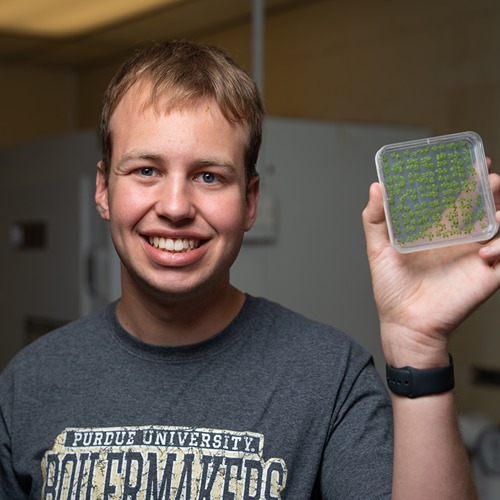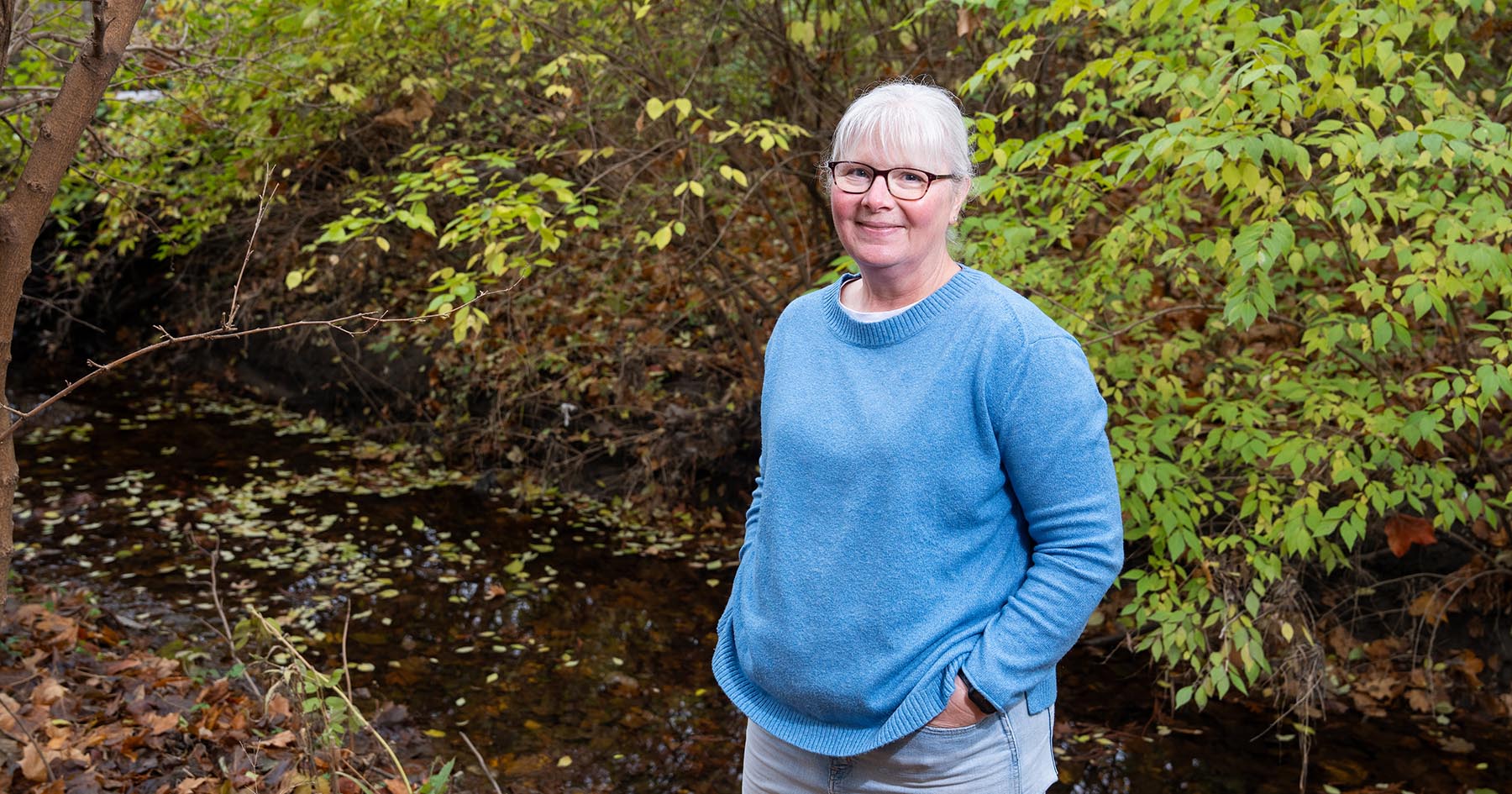Deer Impact Toolbox Provides Guidance for Indiana Forest Landowners and Managers
WEST LAFAYETTE, Ind. — In collaboration with The Nature Conservancy, Purdue Forestry and Natural Resources (FNR) Extension has developed the Deer Impact Toolbox, a comprehensive set of resources designed to help landowners and managers understand, monitor and effectively mitigate the impact of deer on Indiana’s forest ecosystems. Comprised of four publications and two how-to videos, the toolbox offers insights into deer monitoring techniques and proven strategies for minimizing their impacts.
“Deer impact the forest in a variety of ways, through the plants they eat and browse,” said Jarred Brooke, extension wildlife specialist. “When deer become overabundant — there are more deer than there is food on the landscape — this can have a negative impact on different aspects of the forest, such as the plant or wildlife diversity, tree regeneration and growth, the number of invasive plants and the structure of our forests.”
Now accessible to the public through Purdue FNR Extension’s website and the Purdue Education Store, the Deer Impact Toolbox equips landowners and managers with the knowledge needed to take control of their land management practices and make well-informed decisions.
The first publication, “Introduction to White-tailed Deer Impacts on Indiana Woodlands,” delves into the significance of deer impact and its various effects on the forest ecosystems, provides insight into differentiating deer browsing from other animal browsing and showcases a visual graphic of the impact levels, ranging from low to very high. Additionally, the publication outlines a five-step approach to effective deer impact management: understand, identify, monitor, manage and evaluate.
Following the introduction, the toolbox offers three publications that elaborate on these steps. “Understanding White-tailed Deer and Their Impact on Indiana Woodlands” provides in-depth knowledge on year-round deer behavior, from their dietary preferences to the underlying causes of negative impacts on woodlands, and includes a questionnaire designed for assessing deer impact.
“Monitoring White-tailed Deer and Their Impact on Indiana” recommends a range of deer and deer impact monitoring methods, including deer pellet surveys, trail cameras, records of which plants deer browse and twig aging, which is highly recommended for Indiana woodlands.
“When monitoring deer impact, you can’t always tell the level of browse just by looking at the number of deer in the landscape. You also need to monitor your woodland plants over time to really understand what overall impact deer are having to plant diversity, as well as forest regeneration,” Brooke added.
The final publication, “Managing White-tailed Deer Impacts on Indiana Woodlands” offers an overview of available control methods, spanning from population control strategies to the implementation of physical barriers and repellents, while equipping managers and landowners with the tools needed to evaluate the efficacy of these interventions.
While the Deer Impact Toolbox is tailored to Indiana and its neighboring region, Brooke highlights its versatility. “Some of the resources inside the toolbox — like the one that helps landowners and managers monitor what level of deer impact they are having — were developed by other universities in other states, so some tools could be applied more broadly, especially in the eastern United States.”
The informational videos “Monitoring Deer Impacts on Indiana Forests: Accessing Vegetation Impacts of Deer (AVID) Plots” and “Monitoring Deer Impacts on Indiana Forests: Ten Tallest Method” are available on Purdue FNR’s Extension’s YouTube channel, offering a visual demonstration of some of the monitoring techniques highlighted within the toolbox.
To spread awareness about the monitoring and management methods mentioned within the Deer Impact Toolbox, Purdue FNR Extension will be hosting a forestry field day at the Herrmann Reserve, near Redkey, Indiana, on April 27.
For more information on the Integrated Deer Management Project, a multiyear research project led by the Department of Forestry and Natural Resources in partnership with the Indiana Department of Natural Resources – Division of Fish and Wildlife, which works to combine deer population and habitat information with public attitudes toward deer to enhance white-tailed deer management in Indiana, visit Research IN Deer.
Writer: Devyn Raver, draver@purdue.edu
Media contacts: Jarred Brooke, jmbrooke@purdue.edu
Agricultural Communications: 765-494-8415;
Maureen Manier, Department Head, mmanier@purdue.edu





